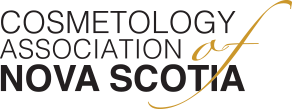Chair/Room Renter - Salon Permit Required
Updated September 14, 2021
If you rent a space or chair within a salon or spa to provide cosmetology services, you are considered a self-employed sole proprietor and business owner; therefore, you are required to obtain a salon permit from the Association.
This is also required for all Hairdressers who are renting a chair when the salon owner is paying EI on behalf of that renter and issues that renter a T4 for EI purposes.
For further information please contact the Association directly.
Understanding Chair and/or Room Rental Permits
HAIRSTYLISTS - PLEASE NOTE:
Chair renters - the salon owner must pay EI for you, regardless of the fact that you consider yourself self-employed.
EI Premiums
Under the IECPR, the owner or operator of the barbering or hairdressing establishment is considered the employer of an individual whose employment is related to the establishment. This employment is included in insurable employment under the EIR. This is the case even if the individual is not employed under a contract of service and is considered self-employed. The employment is considered insurable employment under the EIR if the three following conditions are met:
- The worker is in the occupation of a barber or a hairdresser.
- The barber or hairdresser provides services normally provided in a barbering or hairdressing establishment.
- The barber or hairdresser is not the owner or operator of the establishment.
There are currently independent chair or room renters and salon or spa owners who are not conducting business under the guidelines established by CRA. If you are not following the CRA guidelines, you may be subject to a review and audit by CRA, resulting in possible penalties and fines. The Association is providing this information to help cosmetologists better understand business tax requirements.
According to CANADA REVENUE AGENCY, (see also Guide T4001, Employers’ Guide - Payroll Deductions and Remittances pg. 44) a chair/room renter is self-employed if any of the following situations (not limited to) apply:
Indicators that a worker is self-employed
- The worker can accept or refuse clients.
- The worker rents or leases space, a chair or both (chair renter).
- The worker determines their work schedule.
- The worker collects and keeps all revenue from services performed.
- The worker establishes the price of services offered.
- The worker keeps their exclusive client list and controls how the clients are served and whether someone else can perform a service for their client.
- The worker displays products in the establishment, sells them to their clients and keeps the proceeds from the sales.
- The worker can hire replacements or may even hire workers to help perform the services offered and is responsible for paying their remuneration.
- The worker advertises and actively markets their services.
1. You have your own BN (business number) with Canada Revenue Agency.
2. You have an HST number with Canada Revenue Agency.
READ MORE: ARE YOU EMPLOYED OR SELF-EMPLOYED?
Please visit Canada Revenue Agency's website at https://www.canada.ca/en/revenue-agency/services/tax/businesses/topics/payroll/payroll-deductions-contributions/special-situations/barbers-hairdressers.html for more information and updates, or contact CRA directly at 800-959-5525.
